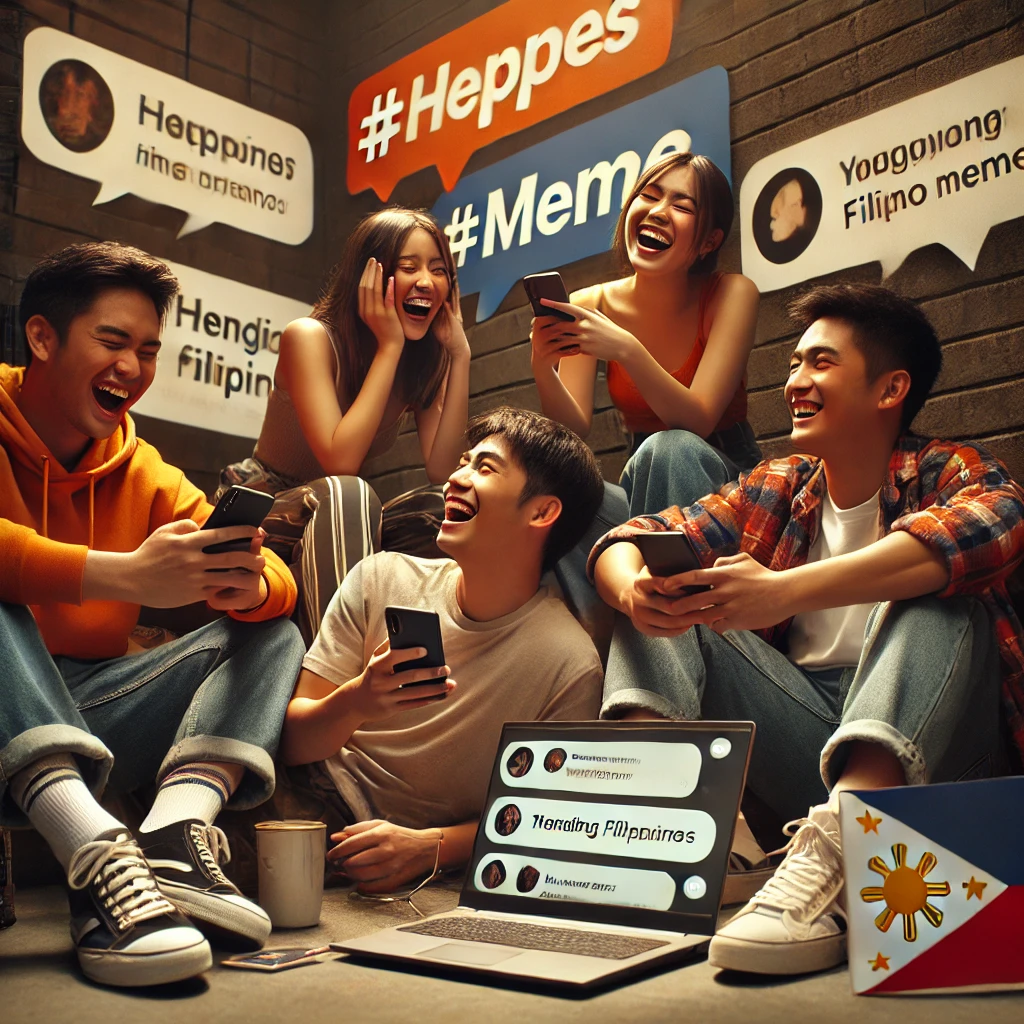The Filipino internet landscape has transformed dramatically since the early 2000s, morphing into a vibrant digital ecosystem where memes reign supreme as the ultimate form of cultural expression. What started as simple image macros and funny photos has evolved into a sophisticated form of communication that perfectly captures the Filipino spirit of finding humor in every situation. According to the Digital 2023 Report by We Are Social and Meltwater, the Philippines continues to hold its title as the “Social Media Capital of the World,” with Filipinos spending an average of 4 hours and 15 minutes daily on social media platforms – a perfect breeding ground for meme culture to flourish. This astronomical social media usage, combined with the Filipino’s innate wit and creativity, has created a unique digital environment where memes serve not just as entertainment but as powerful tools for social commentary, political discourse, and cultural preservation.
The Evolution of Filipino Meme Culture
From Jejemon to Gen Z: A Digital Journey
The story of Filipino meme culture is intrinsically linked to the country’s internet adoption journey. Back in the early 2010s, when “Jejemon” speak was all the rage, Filipinos were already showing signs of their creative potential in digital spaces. The transition from simple text-based humor to sophisticated visual memes mirrors the Philippines’ rapid digitalization. According to the Philippine Statistics Authority’s 2022 report, internet penetration in the Philippines has reached 76.01% of the population, providing an enormous audience for meme creators and sharers. The accessibility of smartphones and affordable internet plans has democratized meme creation, allowing anyone with a witty idea to potentially go viral.
Here’s a breakdown of Filipino meme evolution:
| Era | Dominant Meme Type | Popular Platforms | Key Characteristics |
|---|---|---|---|
| 2010-2012 | Text-based/Jejemon | Facebook, Friendster | Alternative spelling, excessive punctuation |
| 2013-2015 | Image macros | Facebook, Twitter | Local celebrities, political figures |
| 2016-2018 | Video memes | Facebook, YouTube | Dubbing, dance challenges |
| 2019-2021 | Multi-format | TikTok, Instagram | Mixed media, trending sounds |
| 2022-Present | Short-form video | TikTok, Instagram Reels | Interactive, platform-specific |
The Anatomy of Filipino Memes
What Makes Pinoy Memes Unique
Filipino memes stand out in the global meme landscape due to their distinctive characteristics. The incorporation of Taglish (Tagalog-English), regional dialects, and cultural references creates a unique flavor that resonates deeply with the local audience. According to a 2023 study by the University of the Philippines’ Department of Communication Research, 89% of Filipino internet users aged 16-35 regularly engage with memes that contain local cultural elements. This high engagement rate demonstrates how memes have become an integral part of modern Filipino digital culture.
The Language of Laughter
The linguistic creativity in Filipino memes deserves special attention. The clever mixing of English, Tagalog, and various regional languages creates layers of meaning that are often lost in translation. This linguistic playground has given birth to countless viral expressions that have become part of everyday Filipino vocabulary. Research from the Ateneo de Manila University’s Department of Filipino in 2023 identified over 200 new words and phrases that entered common usage through memes, highlighting their significant impact on language evolution.
The Social Impact of Meme Culture
Beyond the Laughs: Memes as Social Commentary
Filipino memes have evolved beyond simple entertainment to become powerful vehicles for social commentary and political discourse. During the 2022 presidential elections, meme engagement rates increased by 287% compared to non-election periods, according to social media analytics firm Talkwalker. This demonstrates how memes have become a crucial tool for expressing political opinions and engaging in civic discourse, especially among younger generations.
The Business of Memes
When Humor Meets Marketing
The commercial potential of memes hasn’t gone unnoticed by businesses and marketers. According to a 2023 report by the Philippine Association of Digital Marketing Professionals:
| Metric | Percentage |
|---|---|
| Brands using memes in marketing | 68% |
| Engagement rate increase with meme content | 147% |
| Brand recall improvement | 89% |
| Cost reduction in content creation | 42% |
The Dark Side of Meme Culture
Navigating the Fine Line
While memes bring joy and connection, they also present challenges. Cyberbullying, misinformation, and cultural appropriation are serious concerns. The Philippine National Police Cybercrime Division reported a 43% increase in meme-related cyberbullying cases from 2021 to 2023. This highlights the importance of responsible meme creation and sharing.
The Future of Filipino Meme Culture
What’s Next for Pinoy Memes?
The future of Filipino meme culture looks bright and dynamic. With the emergence of new platforms and technologies, memes continue to evolve in form and function. According to digital trend analysts at We Are Social, Filipino meme creation is expected to grow by 34% annually through 2025, driven by:
- Increased mobile internet accessibility
- Growing digital literacy among Gen Z and Gen Alpha
- Advanced content creation tools
- Stronger platform integration
- AI-powered meme generation tools
The Global Impact
Filipino Memes on the World Stage
Filipino meme culture has begun making waves internationally. Major global platforms like 9GAG and Know Your Meme have dedicated sections to Filipino memes, recognizing their unique appeal and creativity. According to social media analytics platform Crowdtangle, Filipino memes saw a 156% increase in international engagement from 2022 to 2023.
Why Filipino Memes Matter
Cultural Preservation in the Digital Age
Memes have become an unexpected but effective means of preserving and evolving Filipino culture. They capture contemporary experiences, social issues, and cultural nuances in ways traditional media cannot. The Digital Culture Archive of the Philippines estimates that memes account for 23% of all digital cultural content produced in the country, making them a significant part of modern Filipino cultural heritage.
Conclusion: The Meme-ingful Future
The rise of meme culture in the Philippines represents more than just a trend – it’s a cultural revolution that has transformed how Filipinos communicate, express themselves, and engage with social issues. As we continue to navigate this digital age, Filipino memes stand as testament to the creativity, resilience, and humor that define the Filipino spirit. Their evolution from simple jokes to powerful tools of expression and social change demonstrates the incredible potential of digital culture in shaping society.
Impact Statistics at a Glance:
| Category | Impact Measurement |
|---|---|
| Daily Social Media Usage | 4h 15m per Filipino |
| Meme Engagement Rate | 89% among 16-35 age group |
| New Meme-Origin Words | 200+ added to common usage |
| Marketing Engagement Increase | 147% with meme content |
| International Growth | 156% increase in global engagement |
Disclaimer: This blog post is based on publicly available data and research as of 2023-2024. While we strive for accuracy in our reporting, the dynamic nature of digital culture means some information may have changed since publication. Please report any inaccuracies to our editorial team for prompt verification and correction. Sources include We Are Social, Meltwater, Philippine Statistics Authority, UP Department of Communication Research, Ateneo de Manila University, Talkwalker, Philippine Association of Digital Marketing Professionals, and the PNP Cybercrime Division. All statistics and findings are subject to update as new data becomes available.




